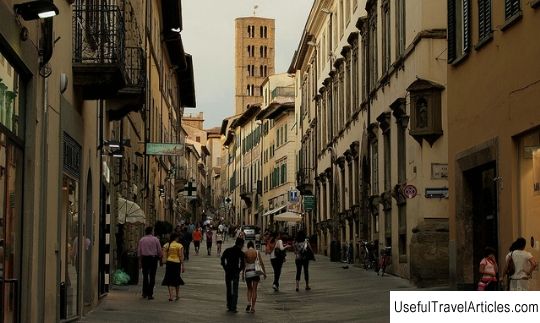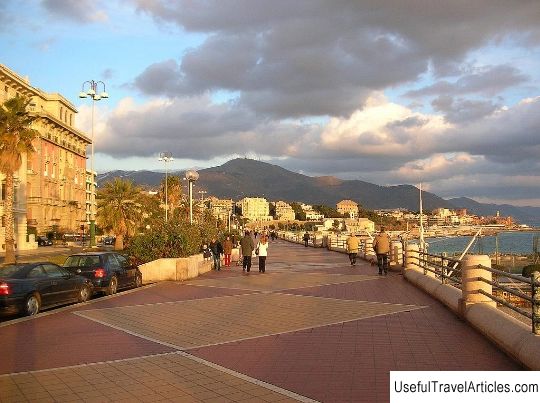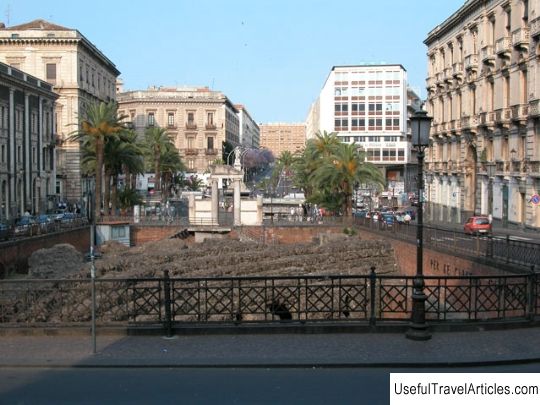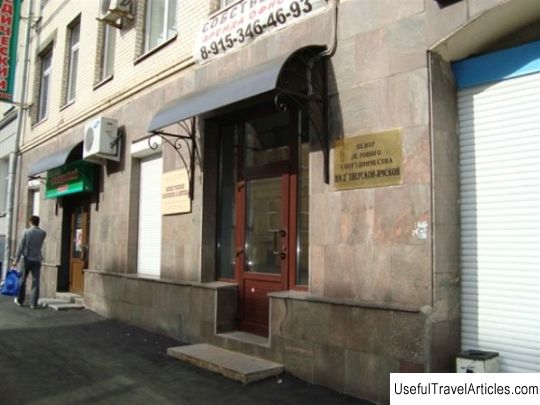Corso Italia street description and photos - Italy: Arezzo
Rating: 8,4/10 (1754 votes) 
Corso Italia street description and photos - Italy: Arezzo. Detailed information about the attraction. Description, photographs and a map showing the nearest significant objects. The title in English is Corso Italia. Photo and descriptionCorso Italy, known as Borgo Maestro until the 19th century, is one of the main streets of Arezzo. This wide, straight street, dating back to ancient times, starts from the Bastion of Santo Spirito and goes to the Portico in Piazza Grande. In the Middle Ages, it rose to the top of the hill, where today you can see the Porta San Biagio gate, closed in the 15th century. Such a long and straight street, which was quite unusual for medieval cities, was ideal for horse racing. Indeed, until recently, every year on Corso Italy horse races were organized - "Palio alla lunga dei kavali senza fantino". Today on this street you can see buildings of great architectural and historical importance. Palazzo Pretorio is located in the upper part of Corso Italia, which is called Via dei Pileati. This is one of the most impressive buildings in Arezzo, now occupied by the city library. The palazzo consists of three separate buildings, which in the past belonged to the noble families of Arezzo - Albergotti, Sassoli and Lodomeri. All of them were built in the 13th century, and later expanded and rebuilt. Palazzo Sassoli, for example, was used as a prison for nearly 500 years. On the facade, the family coats of arms of the 15-16th centuries have been preserved, which belonged not only to the noble townspeople, but also to the captains and podesta, who played an important role in the political life of Arezzo. Palazzo Albergotti was the property of one of the oldest families in the city. It stands at the corner of Corso Italia and Via degli Albergotti. The palace was built in the 13th century, then rebuilt several times, and in the 16th century it was transferred to the Bacci family. In 1901, the Palazzo was bought by a local bank, which financed its restoration and decorated the building with works by Galileo Chini. Since 1954, the State Archives has been housed in Palazzo Albergotti. Between Palazzo Albergotti and Palazzo Camayani stands the Torre della Bigazza tower, erected in 1351. During the reign of the fascist regime, it was increased in height, like the other medieval towers of Arezzo. And Palazzo Camayani is also known as Palazzo del Capito - it was built in the 13th century on the site of an older building. Then the palace belonged to the Lodomeri family, and only in the 14th century it passed to the Kamayani family. The palazzo was one of the most impressive in Arezzo, but, unfortunately, it was seriously damaged during the Second World War. After the war, it was reconstructed at the expense of Ivan Bruska, a prominent collector, and became his property. And after Bruski's death, a museum named after him was located in Palazzo Camayani. There are other interesting buildings on Corso Italia. For example, the parish church of Santa Maria della Pieve is one of the largest and most beautiful Romanesque churches in Tuscany and is undoubtedly a symbol of medieval Arezzo. It was built in the 12th century on the site of the ancient Roman temple of Mercury and later expanded. The facade of the church is quite original - three rows of loggias with different numbers of columns attract attention. In 1330, a bell tower was built, which received the nickname "Bell Tower of Hundred Holes" for the huge number of windows. Also worth seeing are the 14th-century Palazzo Marsupini, Palazzo Lambardi with a remarkable facade, the partially destroyed Palazzo Altucci, one of the oldest and most famous medieval buildings in Arezzo. Palazzo dei Bostoli of the 13th century, Palazzo Spadari with a luxurious hall and grotesque images of the 17th century, Palazzo Gvillichini with the Gallery of Modern Art, Palazzo Brandaglia and the house where Alessandro Dal Borro was born - the outstanding Italian military leader.       We also recommend reading White Horse Temple (White Horse Temple) description and photos - China: Luoyang Topic: Corso Italia street description and photos - Italy: Arezzo. |




